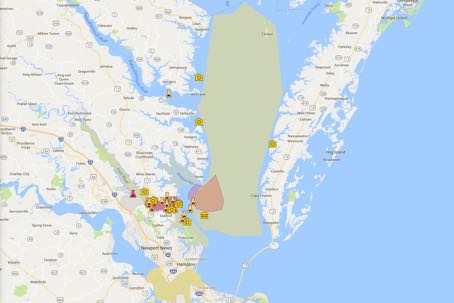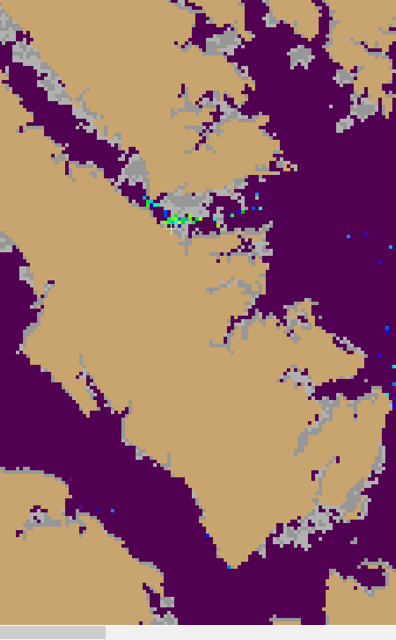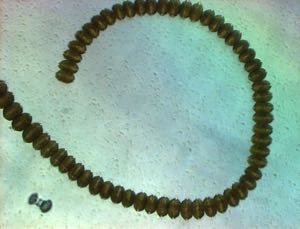2017 HAB Season
Lower Chesapeake Bay

2017 HAB Aerials
Aerial images show the distribution and patchiness of potentially harmful algal blooms in lower Chesapeake Bay.

2017 HAB Map
Water sampling and aerial imagery help delineate the extent and intensity of algal blooms in lower Chesapeake Bay.
Bloom Dynamics
Time-lapse footage shows an algal bloom interacting with tidal currents.
2017 VIMS HAB-O-GRAMS
August 24
"The Alexandrium monilatum bloom is in full force in the lower York River. Satellite images indicate this is the only area in lower Chesapeake Bay being impacted by dense blooms, although there could be blooms in smaller creeks and inlets because the resolution of the satellite images is rather low" "qPCR cell counts in several samples collected this week have been greater than 100,000 cells/ml. Visual cell counts are 4-8 times lower because during rapid growth and division algae exhibit multiple genomes per cell."—VIMS professor Kimberly Reece |
August 22"The annual transition from Cochlodinium polykrikoides to Alexandrium monilatum is now in full bloom, as we sampled some dense patches of Alex in the York River today." —VIMS professor Kimberly Reece |
August 17"We saw little bloom activity other than near Jamestown, the Elizabeth and Lafayette rivers in Norfolk, the North and East rivers off Mobjack Bay, and the York River mouth. The York River blooms were mostly in dispersed patches and discoloration was not intense anywhere."—VIMS professor Wolfgang Vogelbein |
August 7"The bloom seems to be transitioning from mostly Cochlodinium polykrikoides to Alexandrium monilatum. Samples from the York River mouth have up to 8,300 cells/ml of A. monilatum with C. polykrikoides now less than 1,000 cells/ml. Closer to the Coleman Bridge, Cochlo still dominates with up to 24,000 cells/ml." —VIMS professor Kimberly Reece |
July 27
"We now have visual confirmation of the species and cell-count data from qPCR. In samples collected late last week the dominant species was Cochlodinium polykrikoides with qPCR cell counts up to ~75,000 cells/ml in a dense bloom patch. The cell counts for the species that has been the most menacing in past years, Alexandrium monilatum, were higher than expected with one sample having ~6,700 cells/ml. In past years the C. polykrikoides bloom is typically followed a few weeks later by the A. monilatum bloom, however, it is possible that the 'shift' might be occurring earlier this year."—VIMS professor Kimberly Reece |
July 26"The HAB season has begun. The York River seems to be the initiation site and where all the action is right now, most likely Cochlodinium polykrikoides." —VIMS professor Wolfgang Vogelbein |

